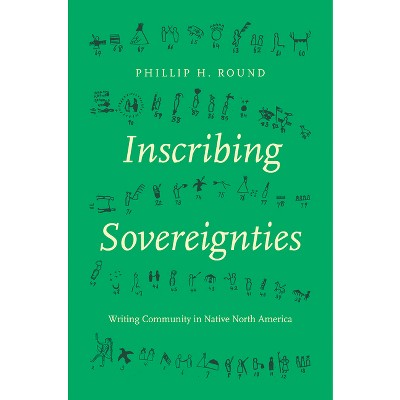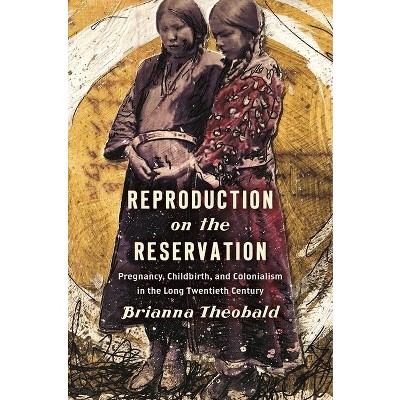Indians on the Move - (Critical Indigeneities) by Douglas K Miller (Paperback)

$32.50 when purchased online
Target Online store #3991
About this item
Highlights
- In 1972, the Bureau of Indian Affairs terminated its twenty-year-old Voluntary Relocation Program, which encouraged the mass migration of roughly 100,000 Native American people from rural to urban areas.
- Author(s): Douglas K Miller
- 272 Pages
- History, Native American
- Series Name: Critical Indigeneities
Description
Book Synopsis
In 1972, the Bureau of Indian Affairs terminated its twenty-year-old Voluntary Relocation Program, which encouraged the mass migration of roughly 100,000 Native American people from rural to urban areas. At the time the program ended, many groups -- from government leaders to Red Power activists -- had already classified it as a failure, and scholars have subsequently positioned the program as evidence of America's enduring settler-colonial project. But Douglas K. Miller here argues that a richer story should be told -- one that recognizes Indigenous mobility in terms of its benefits and not merely its costs. In their collective refusal to accept marginality and destitution on reservations, Native Americans used the urban relocation program to take greater control of their socioeconomic circumstances. Indigenous migrants also used the financial, educational, and cultural resources they found in cities to feed new expressions of Indigenous sovereignty both off and on the reservation.The dynamic histories of everyday people at the heart of this book shed new light on the adaptability of mobile Native American communities. In the end, this is a story of shared experience across tribal lines, through which Indigenous people incorporated urban life into their ideas for Indigenous futures.
Review Quotes
"A fresh and fascinating book written in an accessible style that will be of interest for anyone interested in Native American culture, history, and research . . . . Indians on the Move shows that searches for employment and socioeconomic upward mobility were part of a larger story of Native American off-reservation migration."--American Indian Culture and Research Journal
"A significant contribution. . . . Indians on the Move does not provide an autopsy of VRP's failure. It tells the bigger story of Native Americans responding to VRP in ways that continue to strengthen their communities."--Journal of American History
"An illuminating history. . . . Miller does not retell the history of the Voluntary Relocation Program, but rather expands it outward and inward to account for Native American agency as an important and driving force under settler colonialism. The book is a worthwhile contribution to indigenous studies, migration studies, and American studies because it reconsiders history through the experiences of the humans who lived it and not just the systems that created it."--H-Migration
"By carefully recounting life stories of some of those who migrated, the author suggests that there was another side to the story of American Indian urbanization. . . . Miller's work is a model study on how to do research and write Native American history and is essential reading on twentieth-century Native America."--American Indian Quarterly
"Captures the humanity of indigenous determination to construct a duality that blended American Indian and Anglo-American culture while navigating the relocation program."--The Chronicles of Oklahoma
"In urban migration, Miller finds a creative process whereby Native people brought tribal and non-Indian spaces into dialogue with one another, and he suggests that this process forms a key source of Native resilience in contemporary America. This insight alters our understanding of the relocationx0bpolicy, and it is applicable to many other aspects of modern Native history."--Ethnohistory
"Miller flips the script, demonstrating how Native people often negotiated how relocation would impact their lives on their terms. . . . Indians on the Move is a needed contribution to the fields of Indigenous studies, mobility studies, and urban history. . . . It not only tells a wonderful history but also projects the future--one that is urban and Indigenous."--NAIS
"Using unique source materials and an agency-focused approach, this book generates a flexible, nuanced account of Native mobility and individual efforts toward maintaining practices of 'cosmopolitanism' that have always shaped indigenous cultures and histories."--CHOICE
Dimensions (Overall): 9.21 Inches (H) x 6.14 Inches (W) x .61 Inches (D)
Weight: .93 Pounds
Suggested Age: 22 Years and Up
Series Title: Critical Indigeneities
Sub-Genre: Native American
Genre: History
Number of Pages: 272
Publisher: University of North Carolina Press
Format: Paperback
Author: Douglas K Miller
Language: English
Street Date: April 22, 2019
TCIN: 89055981
UPC: 9781469651385
Item Number (DPCI): 247-15-2064
Origin: Made in the USA or Imported
If the item details above aren’t accurate or complete, we want to know about it.
Shipping details
Estimated ship dimensions: 0.61 inches length x 6.14 inches width x 9.21 inches height
Estimated ship weight: 0.93 pounds
We regret that this item cannot be shipped to PO Boxes.
This item cannot be shipped to the following locations: American Samoa (see also separate entry under AS), Guam (see also separate entry under GU), Northern Mariana Islands, Puerto Rico (see also separate entry under PR), United States Minor Outlying Islands, Virgin Islands, U.S., APO/FPO
Return details
This item can be returned to any Target store or Target.com.
This item must be returned within 90 days of the date it was purchased in store, shipped, delivered by a Shipt shopper, or made ready for pickup.
See the return policy for complete information.





